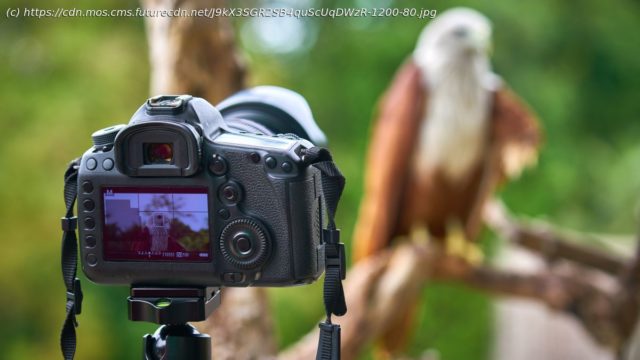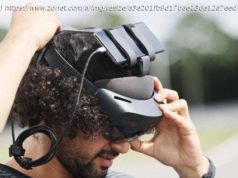Looking for the best wildlife photography camera? We’ve rounded up our top choices from Canon, Nikon, Sony and more
Searching for the best camera for wildlife photography? It’s a tricky task with lots of variables, but luckily we’re here to help. Our in-depth guide below is based on countless hours of testing out in the field, which means we can help answer all of the big questions. For example, do you need a full-frame camera for wildlife photography? Is crop-sensor best? And how many frames per second do you need? Read on for all of the answers. We’ve reviewed every new interchangeable lens camera on the market, but only a handful are really outstanding when it comes to wildlife photography. We’ve taken everything into consideration, from the number of autofocus points and battery life to professional concerns such as dual memory card slots and wireless image transmission. And there’s more – if this is going to be your first leap into interchangeable lens photography, or you’re looking to go big on your next lens purchase, we’ve taken the liberty of suggesting a few lenses that will do justice to your careful research and fieldcraft. From ultra-zoomy bridge cameras to pro-grade DSLRs, we’ve looked at everything in our ranked list of the best cameras for wildlife photography in 2022. So whether you’re looking to take your first steps in the genre, or have been well and truly bitten and are looking to upgrade your current rig, there’s something here for you. Along with sports, wildlife photography is the genre that places the greatest technical demand on a camera. Wildlife subjects are often small, reluctant photo subjects, which means autofocus accuracy, and speed, are absolutely critical. You can all-but guarantee that subjects will appear in surprising locations, so a camera that can quickly detect a subject and drive the lens’ autofocus to the right distance is critically important. You’ll also want a camera that offers good continuous shooting performance. This isn’t something you’ll need absolutely all the time, but for birds in flight, animals jumping, or other pouncing, feeding and hunting behavior, being able to rattle off a dozen frames a second – and in some cases even more – is incredibly useful. Yes, timing is everything, but sometimes keeping the shutter button held down and hoping for the best can yield equally spectacular results. There’s more. If you’re going to shoot wildlife in regions like northern Europe, weather-sealing is vitally important, as you won’t want to let a spot of rain deter you from getting out. Things to look out for include weather-sealed buttons and switchgear, as well as sealing at the junction between lens and camera body. For those embarking on more far-flung adventures, dust-sealing will also save you a few bucks in repair bills. As ever, the best kind of camera protection is insurance. There are a few other things to consider. If you’re heading off on a once-in-a-lifetime trip, you might consider a camera with two memory card slots. This offers a bit of peace of mind – if a camera is writing every image to two memory cards at once, it doesn’t matter if one fails mid-shoot. Social media doyennes might also think about a camera with integrated Wi-Fi, which can allow you to send images to your phone, and then on to the wider web, without to hook things up to a memory card reader or a laptop. What happens when you throw caution to the wind and make the most bonkers, money-no-object mirrorless camera seen yet? Canon knows, and the EOS R3 is the result. Its strengths for wildlife photography are myriad; the EOS R3’s headline continuous frame rate of 30fps (in electronic shutter, rather than mechanical shutter, mode) severely restricts your ability to make excuses for missed shots, while its gnat-like reactions when it comes to autofocus honestly need to be seen to be believed. Car, animal, and person priority autofocus means the days of choosing a particular autofocus point and trying to get your subject under it could be numbered. We’ve tested the EOS R3, as well as its smaller stablemates, the EOS R5 and EOS R6, in a number of challenging autofocus situations, and the capabilities of Canon’s top-end crop of mirrorless cameras needs to be seen to be believed. It’s not just about stills performance; the EOS R3 is an absolute prizefighter when it comes to video as well. It can shoot ultra-crisp video up to 6K RAW; or 4K in 4:2:2 10-bit, giving video editors loads of latitude in post for color grading. For wildlife film-makers slow motion is an option as well; up to 120fps in Ultra HD. Want more? It’s built like a tank, is weather- and dust-sealed, has both SD and CFExpress slots, all the custom modes you could ever want, and compatibility with Canon’s fast-becoming-legendary RF-mount lenses, which, while pricey, are currently the last word in interchangeable lens image quality. Perfect partner: Canon RF 800mm F5.6L IS USM Pushing the boat out? You asked for it. If you’re headed out with the EOS R3, pair it with an equally compromise-free lens, like Canon’s RF 800mm F5.6L IS USM. All the lens a wildlife photographer could want, it combines incredible reach with a large maximum aperture to help keep shutter speeds fast. Want to shoot better wildlife photos? Not overly concerned with the latest and greatest video modes? The Sony A9 II could be for you. We won’t insult you (or Sony) by describing this pricey camera as ‘basic’, but there’s no mistaking its stills-first focus. It’s all about performance. You get 10fps speeds using its mechanical shutter, rising to 20fps when you use the silent electronic shutter, coupled with impressive autofocus performance. This adds up to a camera that locks on tight to its subject and then hoses it down with a continuous burst of sharp,24.2MP raw files. Autofocus is next-level: 693 phase-detection points, including animal and human-priority AF, and an almost uncanny degree of precision, means you’ll be able to make the most of even the most fleeting of wildlife encounters. Shoot video? It does that, although not with the panache of some other cameras at this price. You get 4K, of course, but at a relatively constrained selection of frame rates. Where others support overcranked, slow-motion footage, the A9 II will give you up to 100fps (PAL) at just Full HD, rather than 4K. Image quality is spectacular. Like most of the cameras here, Sony has eschewed stratospheric megapixel counts, and that means the A9 II shoot gorgeous, clean images at surprisingly high ISOs thanks to the lower pixel density. Perfect partner: Sony FE 200-600mm F/5.6-6.3 G OSS Those buying into Sony’s interchangeable lens ecosystem have some brilliant quality options when it comes to lenses. If you’d rather go big than go home, look at the Sony 500mm f/4 G SSM. If you’d like to have a bit of dosh spare for tickets to far-flung places to make the most of your new gear, you might investigate the Sony FE 200-600mm F/5.6-6.3 G OSS, which is a little slower than the 500mm prime (f/6.3 at its furthest zoom), but a super sharp bit of gear that still includes optical image stabilization for a more reasonable price tag.
Home
United States
USA — software Best wildlife photography camera 2022: our top picks from Canon, Nikon and...






